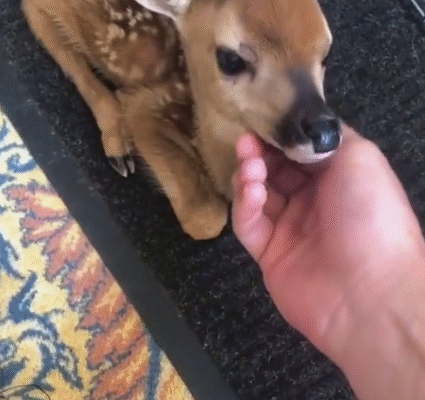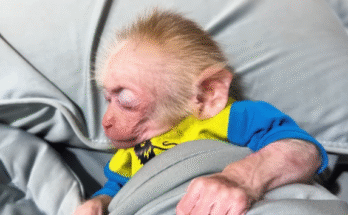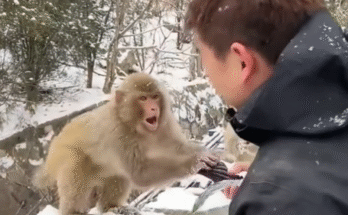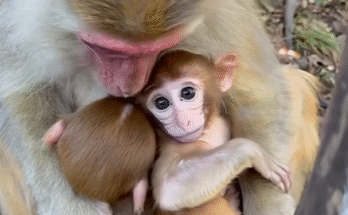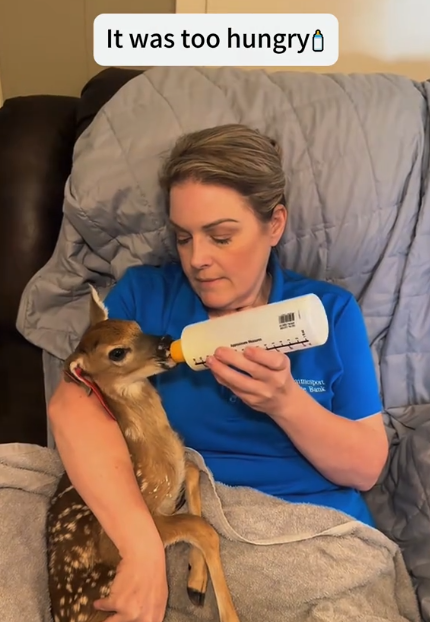
It was just past sunrise when my sister and I set out for our usual morning walk along the old country road that wound its way through farmland, woods, and fields. The air was cool and quiet, the only sounds being the chirping of birds and the crunch of gravel under our shoes. We had walked this path countless times before, but that morning held something none of us could’ve expected.
About twenty minutes into our walk, we noticed something strange on the grassy roadside near the edge of the woods. At first, we thought it might be a pile of leaves or maybe a dog lying down. But as we drew closer, the shape became clearer — it was a tiny fawn, curled up in a ball, motionless except for the occasional twitch of its ear.
It looked alone.
“Is it… okay?” my sister whispered, her voice full of concern.
I approached slowly, not wanting to scare it. The fawn’s big brown eyes blinked up at me, wide and glassy. It didn’t try to run or move. That was the first sign something wasn’t right. Fawns usually bolt at the first sign of danger. But this one looked exhausted — and possibly dehydrated.
We looked around for the mother, hoping she was nearby, watching from the woods. But the area was silent and still. No rustle of hooves, no familiar white-tail flicking through the brush. The fawn was truly alone
“She must’ve been abandoned,” my sister said quietly.
It’s not uncommon for a mother deer to leave her baby hidden in the grass while she forages nearby — but hours later, she almost always returns. The problem was, this fawn was lying only a few feet from a busy road, dangerously exposed. If the mother was coming back, she probably would have already. We stood debating what to do when a car sped past, its tires sending a gust of wind and dust toward the roadside.
That made the decision for us.
We couldn’t leave the little one there.
Back home, our family had raised orphaned birds and once even helped nurse a raccoon back to health. While deer were different, we knew a few things — mostly, that a fawn in distress needed help quickly.
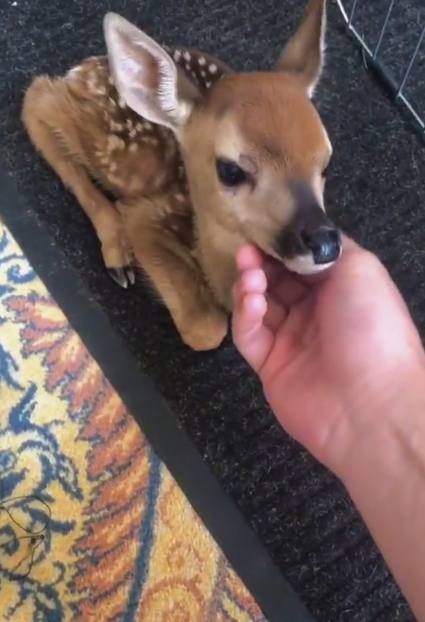
I wrapped my jacket gently around the tiny body. The fawn didn’t resist, though its tiny legs twitched weakly. I could feel its ribs — it hadn’t eaten in some time. We cradled it carefully in our arms and began the slow walk home, stopping every few minutes to make sure it was still breathing.
When we got back to the house, my mom’s eyes widened. “You brought home a what?”
But once she saw the frail little creature, her tone softened. We made a bed of towels in a large crate, placed it in the corner of the warm laundry room, and gave the fawn some water with a dropper. It drank weakly, but enough to give us hope.
We named her Willow, after the tree she had been lying near.
The next few days were filled with research and phone calls. We learned that raising a fawn was no simple task. Their diets are complex, and they imprint on humans easily, which can be dangerous for them if they’re to be released into the wild later. We contacted a local wildlife rehabilitation center and explained the situation. They were grateful we had intervened — apparently, fawns are often victims of roadside accidents or get separated from their mothers due to traffic.
But the center was at capacity.
That left us with a choice: either transport Willow to a larger facility several hours away or care for her ourselves until they had space. After some discussion and a call with a licensed rehabber who agreed to supervise us remotely, we decided to keep her — at least for a while.
Willow began to gain strength. We bottle-fed her with a specialized formula three times a day, kept her warm, and spent time with her in the backyard where she could get some sun and stretch her legs. It was amazing how fast she grew. Within two weeks, her once-wobbly legs were strong enough to leap over flower beds and race across the yard.
She would often nuzzle against us, her big, dark eyes full of trust. But we were careful not to treat her like a pet. We avoided cuddling too much and never let her roam indoors freely. The goal was always to release her back into the wild where she belonged.
One afternoon, we got a call from the rehab center. A spot had opened up, and they were ready to take Willow. My heart sank a little. In just a few short weeks, we had bonded deeply with the little fawn. But I knew it was the right thing.
Saying goodbye wasn’t easy.
We loaded her gently into the back of the car, tucked in a soft blanket, and made the drive to the center. There, the staff greeted us warmly. The woman who took Willow into her care had raised and released dozens of deer. She assured us Willow would be with other fawns her age, learning how to socialize with her kind and slowly preparing for life in the forest.
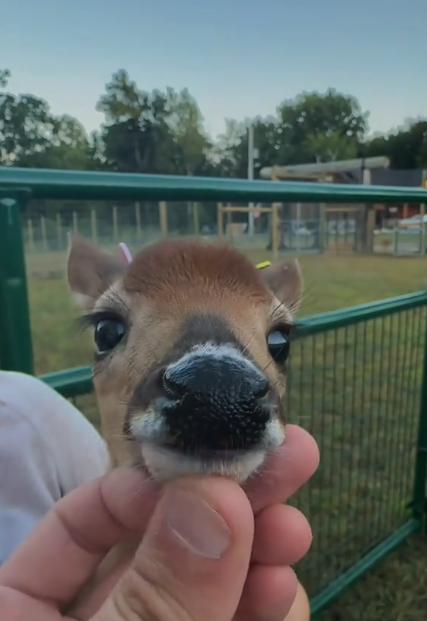
We watched as Willow was led into a grassy enclosure, where two other fawns were grazing. She hesitated at first, then took tentative steps toward them. Within moments, she was trotting beside them, her white tail flicking in curiosity.
“I think she’ll do just fine,” the caretaker said with a smile.
We drove home in silence, both of us watching the road closely — not for traffic, but for any sign of another little creature that might need help.
Weeks passed, and then one day we received an update from the center. Willow had adapted beautifully and was scheduled for release in a few weeks into a protected forest reserve, along with her new companions.
The news filled us with quiet joy. She had been given a second chance — and maybe, in a small way, we had too. The experience taught us how fragile life can be, and how even small, ordinary people can make an extraordinary difference.
Now, whenever we walk past that same patch of roadside lawn, we pause for a moment, remembering that day. It was just an ordinary morning walk — until it wasn’t. And because of that unexpected moment, a tiny fawn named Willow got to run wild and free, just as she was meant to.
And for us, it was a beautiful reminder that kindness — even on a roadside lawn — can ripple far beyond what we can imagine.
